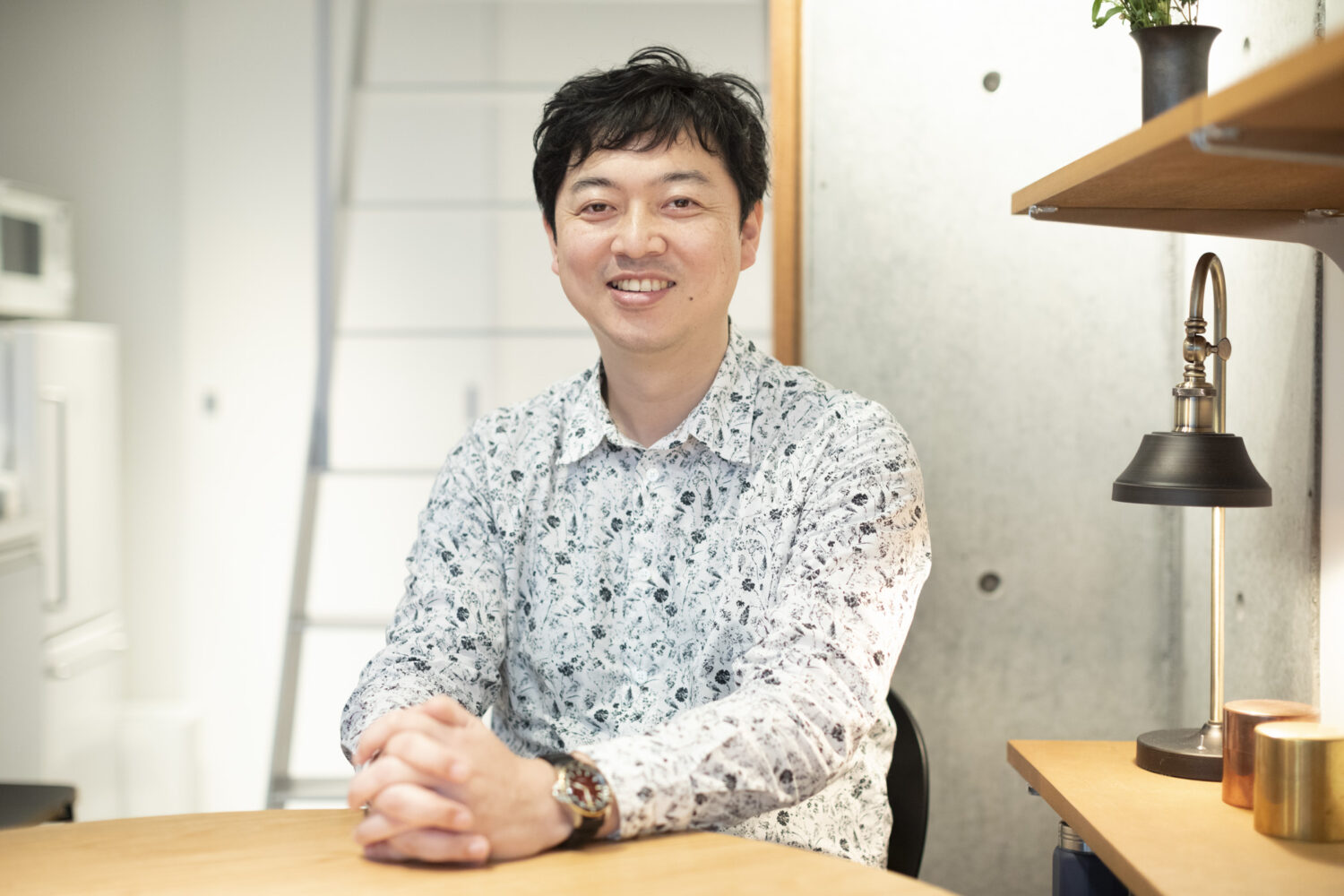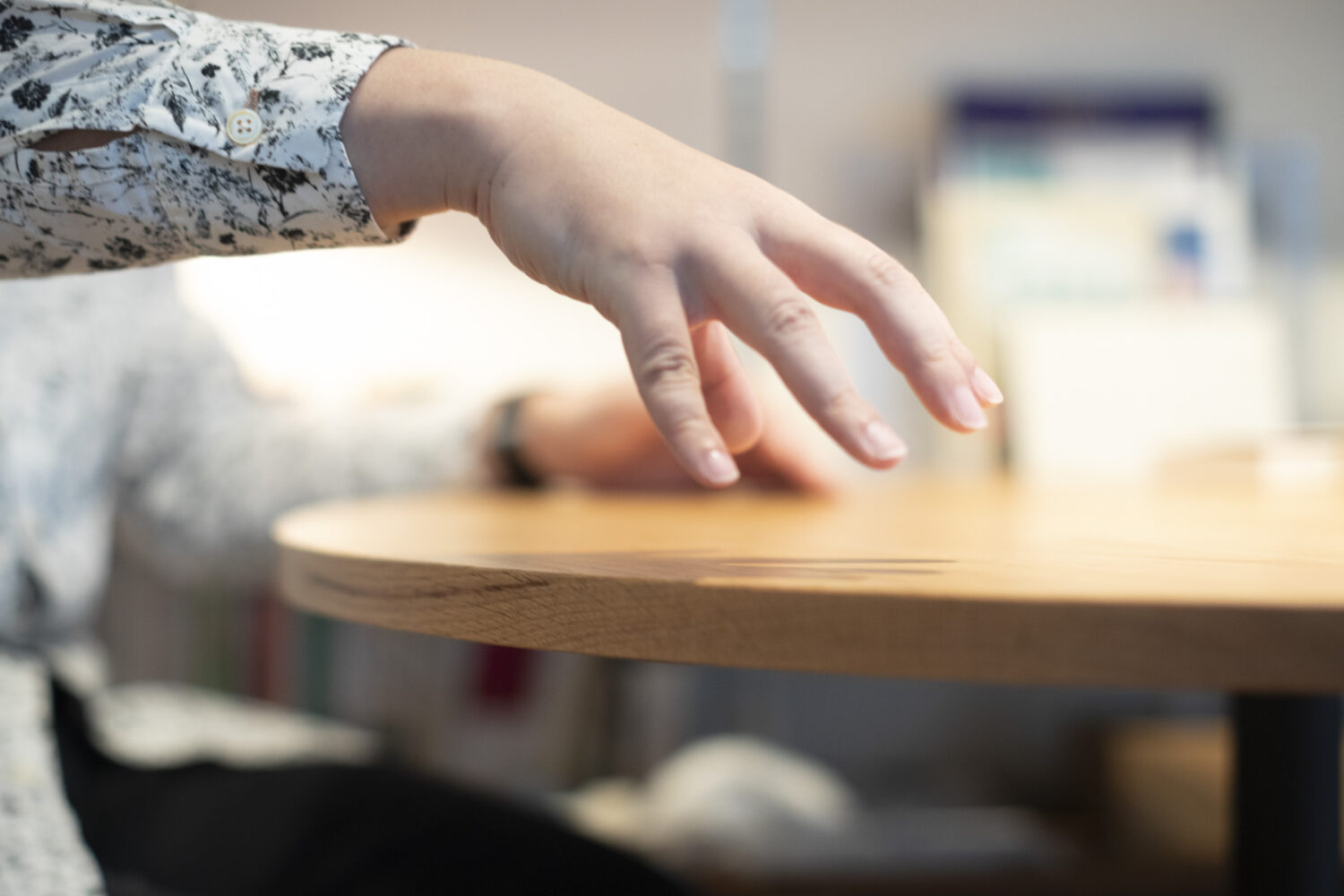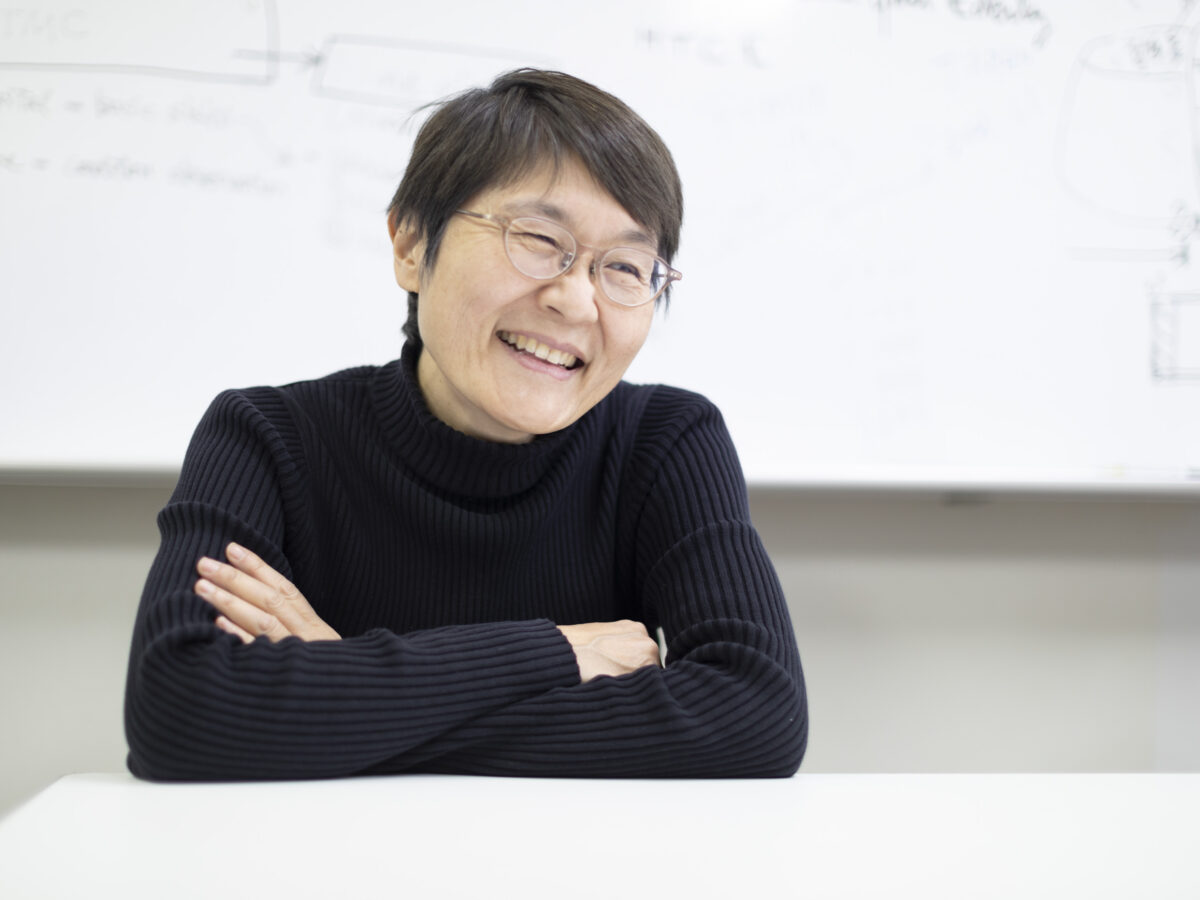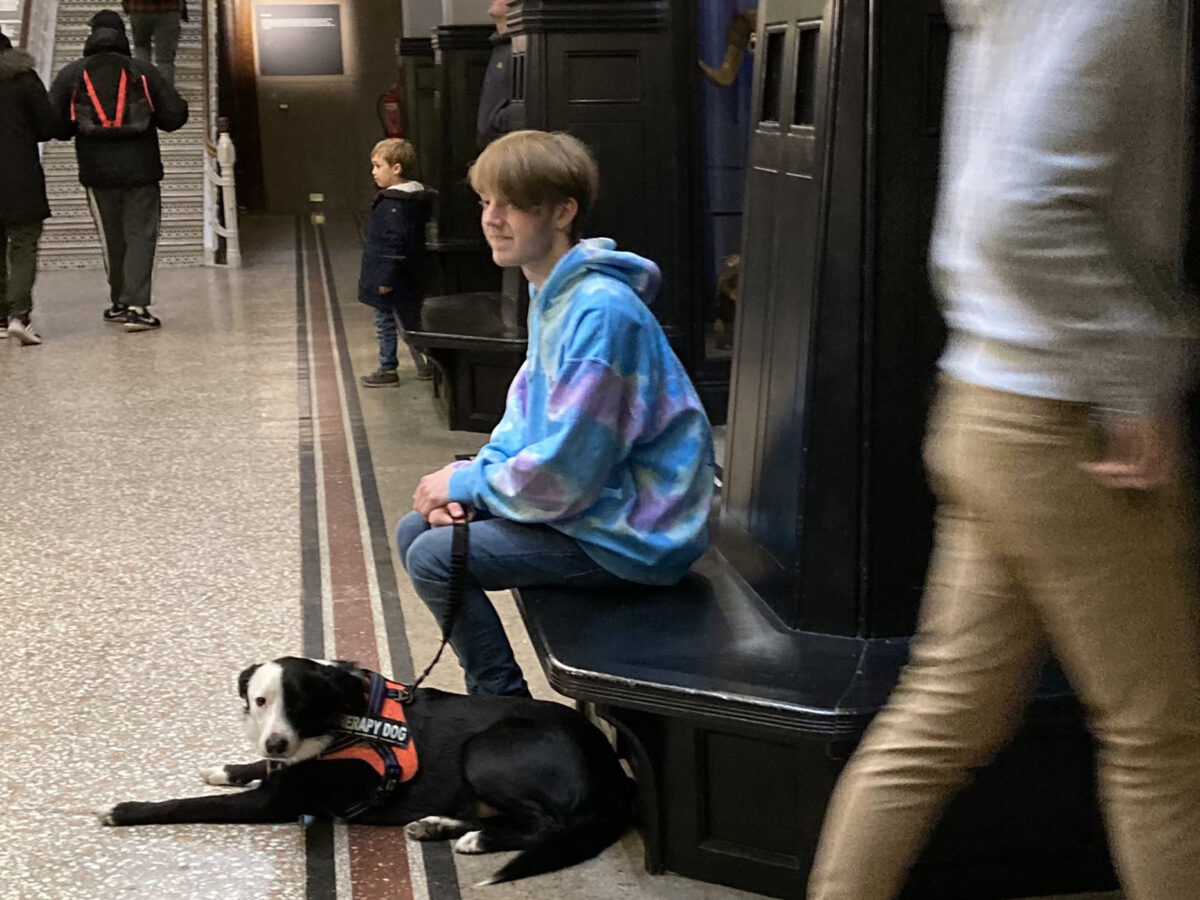
Dr. Nishi published books: “Social Prescribing” and “Everyone’s Social Prescribing” (Gakugei Shuppansha) and runs “Nurse’s Office for Everyday Life,” that anybody can access in Kawasaki City, Kanagawa Prefecture. We interviewed Dr. Nishi about the relationship between art and social prescribing at “ANurse’s Office for Everyday Life” in Kawasaki City.
目次
Let’s Have Easier Connections

Everybody Can Be Equal in Front of Art
Editor In your books Social Prescribing and Everyone’s Social Prescribing, you introduced various examples of social prescribing. Many of these examples involve art. Could you please share your thoughts on the possibilities and relationship between art and social prescribing?
Nishi I believe that art makes everyone equal. In the process of engaging with art, social status, wealth, age, disabilities, or illnesses do not matter. Furthermore, dialogue often arises among people appreciating art. People talk to each other about how they see the art, what impression they get, and why they feel that way. This is very beneficial. Everybody can speak from their own perspective. It leads people to recognize and accept unique viewpoints and backgrounds that others have. Art helps us to embrace diversity.

For example, Patrick, who was featured in Social Prescribing runs a project at “Drawing Life” in Hastings in the UK. Drawing Life is working to mitigate the isolation that people with dementia, and their carers experience. In the program introduced in Social Prescribing, a drawing class was held for people with dementia and their families. They were not only drawing for its social benefit. They drew real models at nursing homes. Patrick finds the freedom of expression in dementia patients fascinating. He is constantly surprised by the unique forms of expression they produce.
When we think about supporting people with dementia, we might assume what they can or cannot do based on their condition. However, Patrick views participants as artists, not patients. As he interacts with them as artists, people who did not talk before sometimes begin to speak, and others discover their own forms of expression. This is the power of art.
Editor We hope to introduce activities like this in Japan. However, if there is a lack of understanding of social prescribing, it might result in superficial approaches.
Nishi Yes, you are right. For example, having participants do coloring books and praising them with predetermined responses like “You drew a nice picture, it’s wonderful,” does not bring out their individuality and might not be a creative and enjoyable experience for them. It is not important to color tidily and beautifully. Even if people draw messy lines, it is more important to find the power or beauty in the movement of those lines. Each person’s creativity should be respected. If we become too fixated on the term “social prescribing,” we may create a division between “supporters” and “supported.” This mindset can be risky as it tends to lead to the idea of “helping” someone.
Everybody Exists as Just a Resident

Editor What should we do to avoid such division?
Nishi Well, for example, we, health care professionals, take supporting roles in hospitals. However, emphasizing the role of “supporter” in everyday settings is not good. If we behave as “health care professionals” outside of hospitals and try to teach people “what is the right health care,” it creates division in communities. We need to exist as “just a resident.” Just like an artist might say, “I’m good at art,” as a doctor, I am simply “knowledgeable in medical and healthcare matters.” Everyone is equal. People with disabilities, those with dementia, cancer patients, children—all exist within the same relationships.
If we focus too much on the term “social prescribing,” we may become overly eager to address isolation and loneliness, acting as supporters in the community. But as mentioned earlier, it is better if everyone is equal. We do not need to try too hard. We can just relax and enjoy ourselves together. When somebody says to you “I drew this picture,” you can just enjoy it and say something like, “Great, it is interesting!” That is enough. We can just casually do it with excitement. If we bring a judgment of what is right or not, it becomes tedious.
Link Workers Connecting People
Editor In Social Prescribing, you mention a role that is little known in Japan called “Link Worker – a position to meet patients and their families and match them with local community groups requested by health care professionals for Social Prescribing.” Will link workers become important in implementing social prescribing in Japan?
Nishi Well, link workers take an important role in connecting patients to social resources. However, it took more than twenty years in the UK. And they now have a solid framework for it as one of their medical systems. British-style link workers take training, get certificates for their supporting skills, do annual supplementary training, and maintain their techniques. While there are thoughts of introducing the UK model in Japan, focusing on institutionalizing link workers might take too long to address the already apparent issue of isolation in Japan. What I suggest for Japan is to consciously expand relationships where people share hobbies and local information like friends.
What I currently recommend in Japan is to consciously expand relationships where friends exchange hobbies and local information. Suppose someone notices that another person is in a state of unwanted loneliness and thinks they should be connected to some community. If, during the conversation, it turns out that the person likes basketball, then a natural conversation like, “Did you know there’s a basketball court near the station? It seems you can use it for free with kids,” can emerge. Through casual conversations among friends, we can create connections between people and the community. We can advance social prescriptions through everyday conversations.
I appreciate the “Act on the Advancement of Measures to Address Loneliness and Isolation” clarifying the nation’s standpoint toward loneliness and isolation issues and aiming to organize frameworks to tackle them collaborating with local governments, private associations, enterprises, and citizens. Even if you think you’re not isolated now, illness, accidents, or ageing can easily lead to isolation. Everyone has the potential to be isolated eventually. If we don’t address the current isolated individuals, no one will help when we ourselves become isolated. Therefore, it’s better for everyone to engage in support for isolation and loneliness. If link workers become too professional like in the UK, others might hesitate to offer this sort of support. Such a situation is not aligned with the purpose of the Act, which states that everybody should work to tackle loneliness and isolation.

The Role of “Nurse’s Office for Everyday Life” as a Connecting Place
Editor You are running “Nurse’s Office for Everyday Life” in Kawasaki City, Kanagawa Prefecture.
Nishi Yes, right. “Nurse’s Office for Everyday Life” is a place where anybody can consult about their problems on health, care, and living without reservation. Everybody has their favorite places suitable for connection. For example, it could be in cafés, public baths, and museums. I think people can connect from wherever they prefer. Let me introduce a real case. A shop owner was told by his regular customer suffering from a serious disease. However, the owner had no medical knowledge. Furthermore, he was very sensitive and felt uncomfortable hearing about suffering or pain. Though he listened because he knew the customer, he honestly did not want to hear such a story. If the situation had continued, the owner would have been overwhelmed. Then, the owner connected the customer to “Nurse’s Office for Everyday Life” saying “Your situation is too serious for me. “Nurse’s Office for Everyday Life” might be a good place where you can talk. The owner told me that he might have been overwhelmed by the serious story without “Nurse’s Office for Everyday Life.” “Even though I cannot directly solve your problems, I know someone who could help you.” I believe that it is important to expand such networks.
Editor “Nurse’s Office for Everyday Life” is a comfortable space decorated with art. Do you like art?
Nishi I didn’t used to like or understand it very much (laughs). I couldn’t grasp what was good about the artwork even when I visited museums. However, a few years ago, I started taking photographs, and then when I visited museums, I began to appreciate the beauty of the paintings. By viewing artworks and comparing them to photos, I could recognize in the artworks something that photos could not express. Once I recognized that, I got interested in art. Studying examples of social prescriptions abroad, I found numerous cases involving art-related programs. Just seeing those examples can inspire and entertain. However, it’s not always easy to connect art directly with social prescriptions. For example, thinking about “social prescription through photographic expression,” dialogue about the photo might bring out some history of the place. But this can’t happen without a camera, and if not, one would need to borrow one. Compared to paintings, it raises issues of accessibility to tools.

When we make social subscriptions through art, we need to think about the issue of access. There’s the concept of “Green Social Prescribing” for nature and “Blue Social Prescribing” for water bodies, but while it’s beneficial to visit forests or the seaside, we need to consider how to cover the transportation and costs. For people with disabilities, moving on a sandy beach can be challenging. Thus, the concept of solving the inequality of access to nature and water has emerged.
The same applies to art. If access to art is poor, it may become something only for the wealthy or healthy. Many, including myself, tend to forget about “accessibility.” Some might think anyone can visit a museum, but there are people for whom the location is far or the admission fee is a burden. Kawasaki City uses the term “Art for All,” meaning “a city where everyone can enjoy culture and art.” To achieve this, we need to seriously consider “accessibility” to art.
However, even if there are people struggling with isolation or loneliness, having a network of many connected people in the community can solve many issues. The “disease” of isolation can be cured by community connections. I hope everyone will think about what they can do for social prescriptions on their own.




